Mybatis-3 源码之缓存是怎么创建的
Mybatis 缓存问题其实也是面试高频的问题了,今天我们就从源码级别来谈谈 Mybatis 的缓存实现。
(本文源码均在 https://github.com/ccqctljx/Mybatis-3 中,会持续更新注释和 Demo)。
首先我们了解一下缓存是什么:缓存是一般的 ORM 框架都会提供的功能,目的就是提升查询的效率和减少数据库的压力。直白一点就是,开了缓存后,同样的数据查询不必再次访问数据库,直接从缓存中拿即可。
那么面试官常问的 一级缓存 和 二级缓存 又都是什么呢?
一级缓存:一级缓存又称本地缓存,是在会话(SqlSession)层面进行的缓存。随会话开始而生,结束而死。MyBatis 的一级缓存是默认开启的,不需要任何的配置。
二级缓存:由于一级缓存随会话而生,就不能跨会话共享。二级缓存则是用来解决这个问题的,他的范围是 namespace 级别的,可以被多个 SqlSession 共享,生命周期和 SqlSessionFactory 同步。只要是同一个 SqlSessionFactory 创建出来的会话,即可共享相同 namespace 级别的缓存。二级缓存需要配置三个地方:
第一个是在 mybaits-config.xml 配置文件中设置开启缓存:<setting name="cacheEnabled" value="true"/>
第二个是要在 Mapper 文件中配置 <cache/> 标签
第三个是在需要使用缓存的语句上加入useCache="true"
那么一级二级缓存有没有执行顺序什么的呢?答案是有的,如果开启二级缓存那么执行顺序为:
那么我们写个实例代码,来看下一二级缓存的效果吧
public class Demo { public static void main(String[] args) throws IOException {
String resource = "mybatis/mybatis-config.xml"; InputStream inputStream = Resources.getResourceAsStream(resource); SqlSessionFactory sqlSessionFactory = new SqlSessionFactoryBuilder().build(inputStream); SqlSession sqlSession1 = sqlSessionFactory.openSession(); SqlSession sqlSession2 = sqlSessionFactory.openSession();
List<BookInfo> bookInfoList1 = sqlSession1.selectList("com.simon.demo.TestMapper.selectBookInfo"); System.out.println(" sqlSession 1 query 1 ----------------------------- " + bookInfoList1);
List<BookInfo> bookInfoList2 = sqlSession1.selectList("com.simon.demo.TestMapper.selectBookInfo"); System.out.println("sqlSession 1 query 2 -----------------------------" + bookInfoList2);
sqlSession1.commit(); System.out.println("sqlSession 1 commit -----------------------------");
List<BookInfo> bookInfoList3 = sqlSession2.selectList("com.simon.demo.TestMapper.selectBookInfo"); System.out.println("sqlSession 2 query 1 ----------------------------- " + bookInfoList3); }}
复制代码
打印结果是:
由此我们能看到,只有第一次查询执行了 sql,其余两次查询均未去数据库中查询。这就是缓存的效用啦。
我们接下来去到源码来看一下究竟是如何生效的吧。
二级缓存创建过程一:加载配置类
首先,我们创建 SqlSessionFactory 工厂时,会从配置文件中加载所有的配置并生成 Configuration 对象,然后将 Configuration 对象放在 SqlSessionFactory 实例对象中维护起来。解析代码如下
package org.apache.ibatis.builder.xml;public class XMLConfigBuilder extends BaseBuilder { …… private void parseConfiguration(XNode root) { try { propertiesElement(root.evalNode("properties"));
Properties settings = settingsAsProperties(root.evalNode("settings")); loadCustomVfs(settings); loadCustomLogImpl(settings); typeAliasesElement(root.evalNode("typeAliases")); pluginElement(root.evalNode("plugins")); objectFactoryElement(root.evalNode("objectFactory")); objectWrapperFactoryElement(root.evalNode("objectWrapperFactory")); reflectorFactoryElement(root.evalNode("reflectorFactory")); settingsElement(settings); environmentsElement(root.evalNode("environments")); databaseIdProviderElement(root.evalNode("databaseIdProvider")); typeHandlerElement(root.evalNode("typeHandlers"));
mapperElement(root.evalNode("mappers")); } catch (Exception e) { throw new BuilderException("Error parsing SQL Mapper Configuration. Cause: " + e, e); } } * 把 settings 标签的所有配置加载成 Properties * @param context * @return */ private Properties settingsAsProperties(XNode context) { if (context == null) { return new Properties(); } Properties props = context.getChildrenAsProperties(); MetaClass metaConfig = MetaClass.forClass(Configuration.class, localReflectorFactory); for (Object key : props.keySet()) { if (!metaConfig.hasSetter(String.valueOf(key))) { throw new BuilderException("The setting " + key + " is not known. Make sure you spelled it correctly (case sensitive)."); } } return props; } * 设置全局上下文属性 */ private void settingsElement(Properties props) { …… configuration.setCacheEnabled(booleanValueOf(props.getProperty("cacheEnabled"), true)); configuration.setLocalCacheScope(LocalCacheScope.valueOf(props.getProperty("localCacheScope", "SESSION"))); …… } ……}
复制代码
方法 settingsAsProperties 将配置文件中 setting 标签读为 Properties 对象,然后在 settingsElement 方法中全部赋给 configuration 对象,这其中就有对 cache 标签的处理,将 。这个 Configuration 是 BaseBuilder 中描述全局配置的一个类,后面会将它扔给 SqlSessionFactory ,作为全局上下文。
这里还有个方法比较重要,就是 typeAliasesElement 方法,这个方法是将我们配置好的一些别名类,以键值对的形式存储在 TypeAliasRegistry 类中的一个 HashMap 中,例如 "byte" -> Byte.class。这个 TypeAliasRegistry 也会被放入全局配置 Configuration 中。
二级缓存创建过程二:创建 Cache 对象并绑定 Mapper
解析配置文件后,mybatis 知道自己需要开启二级缓存,于是开始了创建缓存之路,首先,先扫描所有 Mapper 文件位置,然后一个个分析过去(此处以 resource 为例分析):
package org.apache.ibatis.builder.xml;public class XMLConfigBuilder extends BaseBuilder { private void mapperElement(XNode parent) throws Exception { if (parent != null) { for (XNode child : parent.getChildren()) { if ("package".equals(child.getName())) { String mapperPackage = child.getStringAttribute("name"); configuration.addMappers(mapperPackage); } else { String resource = child.getStringAttribute("resource"); String url = child.getStringAttribute("url"); String mapperClass = child.getStringAttribute("class");
if (resource != null && url == null && mapperClass == null) { ErrorContext.instance().resource(resource); InputStream inputStream = Resources.getResourceAsStream(resource); XMLMapperBuilder mapperParser = new XMLMapperBuilder(inputStream, configuration, resource, configuration.getSqlFragments()); mapperParser.parse(); }
else if (resource == null && url != null && mapperClass == null) { ErrorContext.instance().resource(url); InputStream inputStream = Resources.getUrlAsStream(url); XMLMapperBuilder mapperParser = new XMLMapperBuilder(inputStream, configuration, url, configuration.getSqlFragments()); mapperParser.parse(); }
else if (resource == null && url == null && mapperClass != null) { Class<?> mapperInterface = Resources.classForName(mapperClass); configuration.addMapper(mapperInterface); } else { throw new BuilderException("A mapper element may only specify a url, resource or class, but not more than one."); } } } } }}
复制代码
找到 Mapper 后,开始针对 Mapper 的解析:
package org.apache.ibatis.builder.xml;public class XMLMapperBuilder extends BaseBuilder { …… public void parse() { if (!configuration.isResourceLoaded(resource)) { configurationElement(parser.evalNode("/mapper")); configuration.addLoadedResource(resource); bindMapperForNamespace(); }
parsePendingResultMaps(); parsePendingCacheRefs(); parsePendingStatements(); } private void configurationElement(XNode context) { try { String namespace = context.getStringAttribute("namespace"); if (namespace == null || namespace.isEmpty()) { throw new BuilderException("Mapper's namespace cannot be empty"); } builderAssistant.setCurrentNamespace(namespace); cacheRefElement(context.evalNode("cache-ref")); cacheElement(context.evalNode("cache")); parameterMapElement(context.evalNodes("/mapper/parameterMap")); resultMapElements(context.evalNodes("/mapper/resultMap")); sqlElement(context.evalNodes("/mapper/sql")); buildStatementFromContext(context.evalNodes("select|insert|update|delete")); } catch (Exception e) { throw new BuilderException("Error parsing Mapper XML. The XML location is '" + resource + "'. Cause: " + e, e); } } ……}
复制代码
这里我们跟缓存相关的有三步,第一步 cacheRefElement 是看看 mapper 中是否标注了 <cache-ref namespace=""/>标签,这个标签的意思是 我可以跟其他 namespace 的 mapper 共用一个 Cache。源码其实就是把 Configuration 中加载好的指定 mapper 的 Cache 对象引用给自己。我们重点看创建 Cache 对象的方法也就是cacheElement(context.evalNode("cache"));
private void cacheElement(XNode context) { if (context != null) { String type = context.getStringAttribute("type", "PERPETUAL"); Class<? extends Cache> typeClass = typeAliasRegistry.resolveAlias(type); LRU – Least Recently Used: Removes objects that haven't been used for the longst period of time.(清除长时间不用的) FIFO – First In First Out: Removes objects in the order that they entered the cache.(清除最开始放进去的) SOFT – Soft Reference: Removes objects based on the garbage collector state and the rules of Soft References.(软引用式清除) WEAK – Weak Reference: More aggressively removes objects based on the garbage collector state and rules of Weak References.(弱引用式清除) */ String eviction = context.getStringAttribute("eviction", "LRU"); Class<? extends Cache> evictionClass = typeAliasRegistry.resolveAlias(eviction); Long flushInterval = context.getLongAttribute("flushInterval"); Integer size = context.getIntAttribute("size");
boolean readWrite = !context.getBooleanAttribute("readOnly", false); boolean blocking = context.getBooleanAttribute("blocking", false); Properties props = context.getChildrenAsProperties(); builderAssistant.useNewCache(typeClass, evictionClass, flushInterval, size, readWrite, blocking, props); } public Cache useNewCache(Class<? extends Cache> typeClass, Class<? extends Cache> evictionClass, Long flushInterval, Integer size, boolean readWrite, boolean blocking, Properties props) { Cache cache = new CacheBuilder(currentNamespace) .implementation(valueOrDefault(typeClass, PerpetualCache.class)) // 包装类(缓存回收策略类) .addDecorator(valueOrDefault(evictionClass, LruCache.class)) // 清除时间 .clearInterval(flushInterval) .size(size) .readWrite(readWrite) .blocking(blocking) .properties(props) .build(); // 构建好Cache后,加入到 configuration 中等待调用。 configuration.addCache(cache); currentCache = cache; return cache; }
复制代码
创建完毕后,这里调用了 configuration.addCache(cache) 方法将生成好的 cache 放进了 configuration 对象中,实际上就是将 cache 对象 put 进了 Configuration 类内部维护的一个 StrictMap 中,而这个 StrictMap 则是继承自 HashMap, 也就是说归根结底这里是将 cache 以 currentNamespace 为 Key 放入了一个 HashMap 中。
二级缓存创建过程三:为每个 sql 语句绑定 cache
在生成 Cache 对象后,Mapper 文件会将本 mapper 中所有的语句标签生成一个个 MappedStatement ,在这个过程中,会给每个 statement 绑定上二级缓存,使得他可以直接使用。
public void parseStatementNode() { String id = context.getStringAttribute("id"); String databaseId = context.getStringAttribute("databaseId");
if (!databaseIdMatchesCurrent(id, databaseId, this.requiredDatabaseId)) { return; }
String nodeName = context.getNode().getNodeName(); SqlCommandType sqlCommandType = SqlCommandType.valueOf(nodeName.toUpperCase(Locale.ENGLISH)); boolean isSelect = sqlCommandType == SqlCommandType.SELECT; boolean flushCache = context.getBooleanAttribute("flushCache", !isSelect); boolean useCache = context.getBooleanAttribute("useCache", isSelect); boolean resultOrdered = context.getBooleanAttribute("resultOrdered", false); ······ StatementType statementType = StatementType.valueOf(context.getStringAttribute("statementType", StatementType.PREPARED.toString())); Integer fetchSize = context.getIntAttribute("fetchSize"); Integer timeout = context.getIntAttribute("timeout"); String parameterMap = context.getStringAttribute("parameterMap"); String resultType = context.getStringAttribute("resultType"); Class<?> resultTypeClass = resolveClass(resultType); String resultMap = context.getStringAttribute("resultMap"); String resultSetType = context.getStringAttribute("resultSetType"); ResultSetType resultSetTypeEnum = resolveResultSetType(resultSetType); if (resultSetTypeEnum == null) { resultSetTypeEnum = configuration.getDefaultResultSetType(); } String keyProperty = context.getStringAttribute("keyProperty"); String keyColumn = context.getStringAttribute("keyColumn"); String resultSets = context.getStringAttribute("resultSets");
builderAssistant.addMappedStatement(id, sqlSource, statementType, sqlCommandType, fetchSize, timeout, parameterMap, parameterTypeClass, resultMap, resultTypeClass, resultSetTypeEnum, flushCache, useCache, resultOrdered, keyGenerator, keyProperty, keyColumn, databaseId, langDriver, resultSets); }
复制代码
构造 mappedStatement 的过程像构建 Cache 一样又臭又长,此处就不再赘述,感兴趣的小伙伴可以自行去看~
以上就是二级缓存的创建过程。二级缓存如此复杂,那么一级缓存呢?
一级缓存创建过程:
一级缓存的创建过程其实比二级缓存要简单得多,他不用考虑跨会话执行的问题,所以仅仅在创建当前会话(SQLSession)时,新建一个缓存对象即可,也就是代码中的 localCache ,如:
private SqlSession openSessionFromDataSource(ExecutorType execType, TransactionIsolationLevel level, boolean autoCommit) { Transaction tx = null; try { final Environment environment = configuration.getEnvironment(); final TransactionFactory transactionFactory = getTransactionFactoryFromEnvironment(environment); tx = transactionFactory.newTransaction(environment.getDataSource(), level, autoCommit); final Executor executor = configuration.newExecutor(tx, execType); return new DefaultSqlSession(configuration, executor, autoCommit); } catch (Exception e) { closeTransaction(tx); throw ExceptionFactory.wrapException("Error opening session. Cause: " + e, e); } finally { ErrorContext.instance().reset(); } } public Executor newExecutor(Transaction transaction, ExecutorType executorType) { executorType = executorType == null ? defaultExecutorType : executorType; executorType = executorType == null ? ExecutorType.SIMPLE : executorType; Executor executor;
if (ExecutorType.BATCH == executorType) { executor = new BatchExecutor(this, transaction); } else if (ExecutorType.REUSE == executorType) { executor = new ReuseExecutor(this, transaction); } else { executor = new SimpleExecutor(this, transaction); }
if (cacheEnabled) {
executor = new CachingExecutor(executor); } executor = (Executor) interceptorChain.pluginAll(executor); return executor; } public class SimpleExecutor extends BaseExecutor {
public SimpleExecutor(Configuration configuration, Transaction transaction) { super(configuration, transaction); } ······}
public abstract class BaseExecutor implements Executor {
private static final Log log = LogFactory.getLog(BaseExecutor.class);
protected Transaction transaction; protected Executor wrapper;
protected ConcurrentLinkedQueue<DeferredLoad> deferredLoads; protected PerpetualCache localCache; protected PerpetualCache localOutputParameterCache; protected Configuration configuration;
protected int queryStack; private boolean closed;
protected BaseExecutor(Configuration configuration, Transaction transaction) { this.transaction = transaction; this.deferredLoads = new ConcurrentLinkedQueue<>(); this.localCache = new PerpetualCache("LocalCache"); this.localOutputParameterCache = new PerpetualCache("LocalOutputParameterCache"); this.closed = false; this.configuration = configuration; this.wrapper = this; } ······}
复制代码
这个 PerpetualCache 是最普通的缓存,内部维护了一个 HashMap 作为缓存承载体。
正如注释所说,每次新开一个会话时,这个 Executor 都会被新建。于是内部维护的缓存自然是每次都更新,也就不存在跨 SQLSession 一说了。
总结一下:
一级缓存的创建随着每次 SQLSession 的开启而创建,仅仅是 Executor 中维护的一个 简单缓存对象,内部以 HashMap 做实现。
二级缓存的创建过程是先读取 mybatis-config.xml 文件确认缓存开启,然后根据 mapper 文件中的 cache 或 cache-ref 标签来创建缓存对象,以 namespace 为id 放在 Configuration 中,并且在解析 mapper 文件中每个 sql 语句时将 cache 对象绑定上。
上面主要讲述了 mybatis 一、二级缓存的创建过程,重点主要放在了二级缓存的创建过程。那么缓存具体是如何使用的,缓存又在什么时候被清空呢?还请大家跟着我继续往下看
Mybatis-3 源码之缓存是如何使用的
下面呢,则主要讲讲这个缓存对象创建出来后,到底是怎么给他用的。借用前面的图,由于开启二级缓存后,我们查询数据库的执行顺序如下,所以我们按照顺序来一步步深入:
使用缓存第一步:创建 Executor 对象
有过一定源码基础的同学肯定知道,我们 Mybatis 底层执行增删改查操作时,执行对象实际上就是一个个 Executor。那么不例外,我们使用缓存肯定也要在 Executor 上做手脚,那么我们跟随源码来看下 Mybatis 究竟做了什么“手脚”吧:
首先是 sqlSessionFactory.openSession()时调用的 openSessionFromDataSource 方法
private SqlSession openSessionFromDataSource(ExecutorType execType, TransactionIsolationLevel level, boolean autoCommit) { Transaction tx = null; try { final Environment environment = configuration.getEnvironment(); final TransactionFactory transactionFactory = getTransactionFactoryFromEnvironment(environment); tx = transactionFactory.newTransaction(environment.getDataSource(), level, autoCommit); final Executor executor = configuration.newExecutor(tx, execType); return new DefaultSqlSession(configuration, executor, autoCommit); } catch (Exception e) { closeTransaction(tx); throw ExceptionFactory.wrapException("Error opening session. Cause: " + e, e); } finally { ErrorContext.instance().reset(); } }
复制代码
然后我们跟着代码进入这里的 newExecutor 方法:
public Executor newExecutor(Transaction transaction, ExecutorType executorType) { executorType = executorType == null ? defaultExecutorType : executorType; executorType = executorType == null ? ExecutorType.SIMPLE : executorType; Executor executor;
if (ExecutorType.BATCH == executorType) { executor = new BatchExecutor(this, transaction); } else if (ExecutorType.REUSE == executorType) { executor = new ReuseExecutor(this, transaction); } else { executor = new SimpleExecutor(this, transaction); } if (cacheEnabled) { executor = new CachingExecutor(executor); } executor = (Executor) interceptorChain.pluginAll(executor); return executor; }
复制代码
先说一句题外话,我们看到,根据传入的类型会创建不同类型的 Executor ,而这里的 BatchExecutor、ReuseExecutor 和 SimpleExecutor 实际上都继承了BaseExecutor 方法,这里 Mybatis 采用了模板模式。定义了很多操作顺序,而由子类实现具体方法。后期会出一个设计模式的板块,敬请期待。
好了,言归正传。我们发现这里有一个很让人欣喜的判断:if (cacheEnabled),嘿我们昨天从 mybatis-config.xml 配置文件里读进来的好像就是这玩意儿!没错就是他,这里会根据你设置 cacheEnabled 的值来决定是否创建 CachingExecutor 。也就是说如果我们设置为 true,这里就会为这些 Executor 们包装上一层 CachingExecutor 。而这个 CachingExecutor 则是二级缓存的关键包装类。
OK,创建 SQLSession 的步骤完成了,我们紧接着来看他的查询方法究竟是怎么使用缓存的吧!
使用缓存第二步:生成缓存 Key
话不多说,我们直接上查询的源码吧,这里以 selectList 为例:
这里追踪源码时,不要忘记实现类是 CachingExecutor
@Override public <E> List<E> query(MappedStatement ms, Object parameterObject, RowBounds rowBounds, ResultHandler resultHandler) throws SQLException { BoundSql boundSql = ms.getBoundSql(parameterObject); CacheKey key = createCacheKey(ms, parameterObject, rowBounds, boundSql); return query(ms, parameterObject, rowBounds, resultHandler, key, boundSql); }
复制代码
我们继续追踪生成 key 的方法:
public CacheKey createCacheKey(MappedStatement ms, Object parameterObject, RowBounds rowBounds, BoundSql boundSql) { if (closed) { throw new ExecutorException("Executor was closed."); } CacheKey cacheKey = new CacheKey(); cacheKey.update(ms.getId()); cacheKey.update(rowBounds.getOffset()); cacheKey.update(rowBounds.getLimit()); cacheKey.update(boundSql.getSql()); List<ParameterMapping> parameterMappings = boundSql.getParameterMappings(); TypeHandlerRegistry typeHandlerRegistry = ms.getConfiguration().getTypeHandlerRegistry(); for (ParameterMapping parameterMapping : parameterMappings) { if (parameterMapping.getMode() != ParameterMode.OUT) { Object value; String propertyName = parameterMapping.getProperty(); if (boundSql.hasAdditionalParameter(propertyName)) { value = boundSql.getAdditionalParameter(propertyName); } else if (parameterObject == null) { value = null; } else if (typeHandlerRegistry.hasTypeHandler(parameterObject.getClass())) { value = parameterObject; } else { MetaObject metaObject = configuration.newMetaObject(parameterObject); value = metaObject.getValue(propertyName); } cacheKey.update(value); } } if (configuration.getEnvironment() != null) { cacheKey.update(configuration.getEnvironment().getId()); } return cacheKey; }
复制代码
不知道你们好不好奇这个 update 方法,不管了,我们继续跟进去看看他到底对这些个东西们做了什么
package org.apache.ibatis.cache;public class CacheKey implements Cloneable, Serializable { private static final int DEFAULT_MULTIPLIER = 37;
private static final int DEFAULT_HASHCODE = 17;
private final int multiplier; private int hashcode; private long checksum; private int count;
8/21/2017 - Sonar lint flags this as needing to be marked transient. While true if content is not serializable, this is not always true and thus should not be marked transient. */ private List<Object> updateList;
public CacheKey() { this.hashcode = DEFAULT_HASHCODE; this.multiplier = DEFAULT_MULTIPLIER; this.count = 0; this.updateList = new ArrayList<>(); } public void update(Object object) { int baseHashCode = object == null ? 1 : ArrayUtil.hashCode(object); count++; checksum += baseHashCode; baseHashCode *= count; hashcode = multiplier * hashcode + baseHashCode; updateList.add(object); }}
复制代码
具体的代码在这里,深刻的思想我也并没有研究出来。他这样做的原理我也没思考出来。但是目的我猜一定是为了让 hashcode 尽量的不重复,以做到在 map 中尽量散列分布,避免 hash 冲突。
生成了缓存键后,我们终于来到了查询步骤,话不多说,我们来看看 query 方法做了什么!
使用缓存第三步:查询使用二级缓存!
我们来详细看下 query 方法到底做了什么
@Override public <E> List<E> query(MappedStatement ms, Object parameterObject, RowBounds rowBounds, ResultHandler resultHandler, CacheKey key, BoundSql boundSql) throws SQLException { Cache cache = ms.getCache(); if (cache != null) { flushCacheIfRequired(ms); if (ms.isUseCache() && resultHandler == null) { ensureNoOutParams(ms, boundSql); @SuppressWarnings("unchecked") List<E> list = (List<E>) tcm.getObject(cache, key); if (list == null) { list = delegate.query(ms, parameterObject, rowBounds, resultHandler, key, boundSql); tcm.putObject(cache, key, list); } return list; } } return delegate.query(ms, parameterObject, rowBounds, resultHandler, key, boundSql); }
复制代码
一步一步来,我们先看获取缓存,也就是 tcm.getObject方法。这里 tcm 代表的是 TransactionalCacheManager 对象,是 CachingExecutor 的一个成员变量,也就是说随着 CachingExecutor 实例的创建而创建,随 CachingExecutor 实例回收而回收。那它是干啥的呢,它其实内部维护了一个以 Cache 为键,TransactionalCache 为值的一个 Map。我们来看看这个类的具体实现和方法:
public class TransactionalCacheManager {
private final Map<Cache, TransactionalCache> transactionalCaches = new HashMap<>();
public void clear(Cache cache) { getTransactionalCache(cache).clear(); }
public Object getObject(Cache cache, CacheKey key) { return getTransactionalCache(cache).getObject(key); }
public void putObject(Cache cache, CacheKey key, Object value) { getTransactionalCache(cache).putObject(key, value); }
public void commit() { for (TransactionalCache txCache : transactionalCaches.values()) { txCache.commit(); } }
public void rollback() { for (TransactionalCache txCache : transactionalCaches.values()) { txCache.rollback(); } }
private TransactionalCache getTransactionalCache(Cache cache) { if(null == transactionalCaches.get(cache)){ transactionalCaches.put(cache, new TransactionalCache(cache)); } 或 transactionalCaches.computeIfAbsent(cache, k -> new TransactionalCache(k)); */ return transactionalCaches.computeIfAbsent(cache, TransactionalCache::new); }
}
复制代码
我们看回到 getObject方法,这里调用了 getTransactionalCache 方法从内部维护的 HashMap 中拿到了一个 TransactionalCache 实例并调用它的 get 方法。这里的 computeIfAbsent方法是 1.8 中针对 HaspMap 的方法,具体示意我写在注释里了,大家感兴趣的话可以自行查询~
这一步需要注意的是,在 get 不到值的时候 new 出来的 TransactionalCache 实际上是一个包装类,进一步包装了 cache。
我们来看下 TransactionalCache 的构造方法和 get 方法你就懂了:
public class TransactionalCache implements Cache {
private static final Log log = LogFactory.getLog(TransactionalCache.class);
private final Cache delegate; private boolean clearOnCommit; private final Map<Object, Object> entriesToAddOnCommit; private final Set<Object> entriesMissedInCache;
public TransactionalCache(Cache delegate) { this.delegate = delegate; this.clearOnCommit = false; this.entriesToAddOnCommit = new HashMap<>(); this.entriesMissedInCache = new HashSet<>(); } @Override public Object getObject(Object key) { Object object = delegate.getObject(key); if (object == null) { entriesMissedInCache.add(key); } if (clearOnCommit) { return null; } else { return object; } }}
复制代码
也就是这里的 get 实际上是从 delegate 即传入的 cache 中拿的。这里如果没拿到,会记录一个未命中 CacheKey,这个操作后面 commit 的时候我们详说。总之,这里第一次进来肯定是查不到的,也就是这会返回一个 null。返回到我们的 query 的代码,这里他判断如果拿出来的 list 为空,则调用被包装类的 query 方法,即 SimpleExecutor 的 query 方法,即 BaseExecutor 的 query方法。这里就涉及到了一级缓存使用的过程。
使用缓存第四步:查询使用一级缓存!
我们来看下这个方法做了些什么。
@SuppressWarnings("unchecked") @Override public <E> List<E> query(MappedStatement ms, Object parameter, RowBounds rowBounds, ResultHandler resultHandler, CacheKey key, BoundSql boundSql) throws SQLException { ErrorContext.instance().resource(ms.getResource()).activity("executing a query").object(ms.getId()); if (closed) { throw new ExecutorException("Executor was closed."); } if (queryStack == 0 && ms.isFlushCacheRequired()) { clearLocalCache(); } List<E> list; try { queryStack++; list = resultHandler == null ? (List<E>) localCache.getObject(key) : null; if (list != null) { handleLocallyCachedOutputParameters(ms, key, parameter, boundSql); } else { list = queryFromDatabase(ms, parameter, rowBounds, resultHandler, key, boundSql); } } finally { queryStack--; } if (queryStack == 0) { for (DeferredLoad deferredLoad : deferredLoads) { deferredLoad.load(); } deferredLoads.clear(); if (configuration.getLocalCacheScope() == LocalCacheScope.STATEMENT) { clearLocalCache(); } } return list; }
复制代码
这个 localCache就是我们一直说的 一级缓存 对象,看完这里大家一定很好奇,这里只见到了拿缓存的方法(localCache.getObject)但是没看到在哪放的呀。大家稍安勿躁,我们来看看这个 queryFromDatabase 方法:
private <E> List<E> queryFromDatabase(MappedStatement ms, Object parameter, RowBounds rowBounds, ResultHandler resultHandler, CacheKey key, BoundSql boundSql) throws SQLException { List<E> list; localCache.putObject(key, EXECUTION_PLACEHOLDER); try { list = doQuery(ms, parameter, rowBounds, resultHandler, boundSql); } finally { localCache.removeObject(key); } localCache.putObject(key, list); if (ms.getStatementType() == StatementType.CALLABLE) { localOutputParameterCache.putObject(key, parameter); } return list; }
复制代码
呐,看到了吧。查完后 localCache.putObject 方法就是放缓存的。这里为什么放置占位对象笔者也没太想懂,各位看官大佬有想法可以留言讨论哦。
我们再看回 query 方法,会发现这里有一步清除缓存的判断,这里的 localCacheScope 我觉得还是有必要拿出来说一下的,这是禁用一级缓存的必要手段。我们可以在 mybatis-config.xml 这个配置文件中,设置相应的 settings 来关闭一级缓存例如:
<settings> <setting name="localCacheScope" value="STATEMENT"/> </settings>
复制代码
官网给这个配置的解释是:
MyBatis uses local cache to prevent circular references and speed up repeated nested queries. By default (SESSION) all queries executed during a session are cached. If localCacheScope=STATEMENT local session will be used just for statement execution, no data will be shared between two different calls to the same SqlSession.
谷歌翻译:MyBatis使用本地缓存来防止循环引用并加快重复的嵌套查询。 默认情况下(会话),将缓存会话期间执行的所有查询。 如果 localCacheScope = STATEMENT 本地会话仅用于语句执行,则对同一SqlSession的两个不同调用之间不会共享数据。
欸,是不是奇怪的知识又增加了。话不多说我们接着看 query 查询完成后的事情吧:
使用缓存第五步:放置二级缓存!
查询完毕后,就调用了 tcm.putObject,好我知道大家肯定找不到了,这里我再放一边 put方法的源码:
public void putObject(Cache cache, CacheKey key, Object value) { getTransactionalCache(cache).putObject(key, value); } private TransactionalCache getTransactionalCache(Cache cache) { if(null == transactionalCaches.get(cache)){ transactionalCaches.put(cache, new TransactionalCache(cache)); } 或 transactionalCaches.computeIfAbsent(cache, k -> new TransactionalCache(k)); */ return transactionalCaches.computeIfAbsent(cache, TransactionalCache::new); }
复制代码
这里我们再进一步追入putObject方法来看看。
@Override public void putObject(Object key, Object object) { entriesToAddOnCommit.put(key, object); }
复制代码
这里可以看到,这仅仅是在TransactionalCache 实例内部的一个 HashMap 中暂存了一下,而并没有调用 delegate 的 put 方法。这也就是说为什么两个事务在提交前都读不到互相的缓存。其实这里可以衍生出很多有趣的 demo,例如 关闭一级缓存后,即使在同一个开启了二级缓存 sqlsession中查询两次,也需要查询两次数据库。具体更多有意思的 demo 可以留言一起交流~
这里 put 进了临时的 map 中,那么什么时候合并进主存中呢?是的,就是当事务提交时,当 CachingExecutor 执行 commit时,会顺带调用 tcm 的提交方法:
@Override public void commit(boolean required) throws SQLException { delegate.commit(required); tcm.commit(); }
复制代码
这里面就将当前事务的临时缓存存入了主缓存:
public void commit() { for (TransactionalCache txCache : transactionalCaches.values()) { txCache.commit(); } }
public void commit() { if (clearOnCommit) { delegate.clear(); } flushPendingEntries(); reset(); } * 这个方法是将本次事务缓存中的所有缓存刷到 delegate 中 * 做到了缓存的事务隔离 */ private void flushPendingEntries() { for (Map.Entry<Object, Object> entry : entriesToAddOnCommit.entrySet()) { delegate.putObject(entry.getKey(), entry.getValue()); } for (Object entry : entriesMissedInCache) { if (!entriesToAddOnCommit.containsKey(entry)) { delegate.putObject(entry, null); } } }
复制代码
这里说到了我们之前放过的 entriesToAddOnCommit,这里如果没命中缓存,且在提交的时候也没查出来,那么就会向主缓存中放一个 null 值占位。目的我猜测是防止缓存击穿。
那么这里有缓存,我们进行增删改的时候,会刷新缓存嘛?我们继续看。
使用缓存第六步:更新时清除缓存!
我们分别写了三个语句,并用 insert | update | delete 三个方法执行:
sqlSession1.insert("com.simon.demo.TestMapper.insertBookInfo"); sqlSession1.update("com.simon.demo.TestMapper.updateBookInfo"); sqlSession1.delete("com.simon.demo.TestMapper.deleteBookInfo");
复制代码
有点源码基础的同学其实知道这里三个方法 共用了同一个 update 方法
那么这个 update 方法内部对缓存又进行了什么操作呢?(注意这里选择实现类时,要选择 CachingExecutor )
@Override public int update(MappedStatement ms, Object parameterObject) throws SQLException { flushCacheIfRequired(ms); return delegate.update(ms, parameterObject); } private void flushCacheIfRequired(MappedStatement ms) { Cache cache = ms.getCache(); if (cache != null && ms.isFlushCacheRequired()) { tcm.clear(cache); } }
复制代码
这里有两个重点,一个是 isFlushCacheRequired 是在哪加载到的,实际上这就是在我们生成 MappedStatement 时加载进 ms 的:
public MappedStatement addMappedStatement( String id, SqlSource sqlSource, StatementType statementType, SqlCommandType sqlCommandType, Integer fetchSize, Integer timeout, String parameterMap, Class<?> parameterType, String resultMap, Class<?> resultType, ResultSetType resultSetType, boolean flushCache, boolean useCache, boolean resultOrdered, KeyGenerator keyGenerator, String keyProperty, String keyColumn, String databaseId, LanguageDriver lang, String resultSets) {
if (unresolvedCacheRef) { throw new IncompleteElementException("Cache-ref not yet resolved"); }
id = applyCurrentNamespace(id, false); boolean isSelect = sqlCommandType == SqlCommandType.SELECT;
MappedStatement.Builder statementBuilder = new MappedStatement.Builder(configuration, id, sqlSource, sqlCommandType) .resource(resource) .fetchSize(fetchSize) .timeout(timeout) .statementType(statementType) .keyGenerator(keyGenerator) .keyProperty(keyProperty) .keyColumn(keyColumn) .databaseId(databaseId) .lang(lang) .resultOrdered(resultOrdered) .resultSets(resultSets) .resultMaps(getStatementResultMaps(resultMap, resultType, id)) .resultSetType(resultSetType) .flushCacheRequired(valueOrDefault(flushCache, !isSelect)) .useCache(valueOrDefault(useCache, isSelect)) .cache(currentCache);
ParameterMap statementParameterMap = getStatementParameterMap(parameterMap, parameterType, id); if (statementParameterMap != null) { statementBuilder.parameterMap(statementParameterMap); } MappedStatement statement = statementBuilder.build(); configuration.addMappedStatement(statement); return statement; }
复制代码
第二个重点就是 tcm 的清理方法,即 tcm.clear方法:
public void clear(Cache cache) { getTransactionalCache(cache).clear(); }
复制代码
这里实际上调用的是 map 中所存的 TransactionalCache实例的clear方法:
@Override public void clear() { clearOnCommit = true; entriesToAddOnCommit.clear(); }
复制代码
大家有没有发现一个事情,这里执行完,实际上并没有清掉主缓存,而是只是清掉了当前事务的临时缓存。大家还记得我们的提交方法嘛?
public void commit() { if (clearOnCommit) { delegate.clear(); } flushPendingEntries(); reset(); }
复制代码
看到没,这里只有在提交(commit)的时候,才会去清主存。这么做也是防止不同事务之间的脏读。这里也可延伸出很多好玩的 demo,比如 sqlSession1 先 select 然后 commit 然后 insert ,sqlsession2 执行相同查询时不查数据库,而是返回 sqlSession1 第一次查询的值。
说到这里,我们的缓存好强大啊,那我们的缓存是完美的嘛?当然不是,我们接着来看:
使用缓存第七步:明白优缺点!
我们使用缓存当然要明白他的优势和缺点在哪里:
优点:优点自然不用多说,我们可以减少查询数据库的次数,降低打开、关闭数据库连接的性能消耗。提高查询速度,缩短查询时间。
缺点:其实最大的缺点在于很容易发生数据的不一致性,为什么这么说呢。我们知道,每个缓存是基于 Mapper 的,缓存的清空也是基于当前 Mapper 的 insert | update | delete 等更新操作。那么我们分两点来看:
第一点是网上普遍说的针对一个表中的所有操作必须放到一个 Mapper 中,比如现在有 Mapper A 和 Mapper B,A 中有针对表 T 的读 sql,B 中则是对表的写 sql,那么这就会导致 A 中修改数据未刷新 B 的缓存,那么读到的数据就是有问题的。针对这个问题实际上是有解法的,我们大可使用cache-ref标签解决。在文章的一开始介绍了 cache-ref 标签。可以让两个 Mapper 使用同一个 Cache ,这样就解决了不刷新的问题
第二个问题是第一个问题的加深版。因为我发现,分布式是无法解决上述问题的。针对两台机器上部署相同的微服务,假如 A 机器读,B机器写且提交,A再去读的话,就有可能会读到二级缓存的东西而导致数据出错。所以才会采用 Redis 之类的缓存手动做缓存失效和刷新。
整个缓存的流程到这里就基本结束了,其实其中还略过了很多东西,例如缓存回收策略类的包装是如何构建的,缓存是如何回收的 ,缓存失效策略具体是如何实现的等,还有待大家细细探寻。


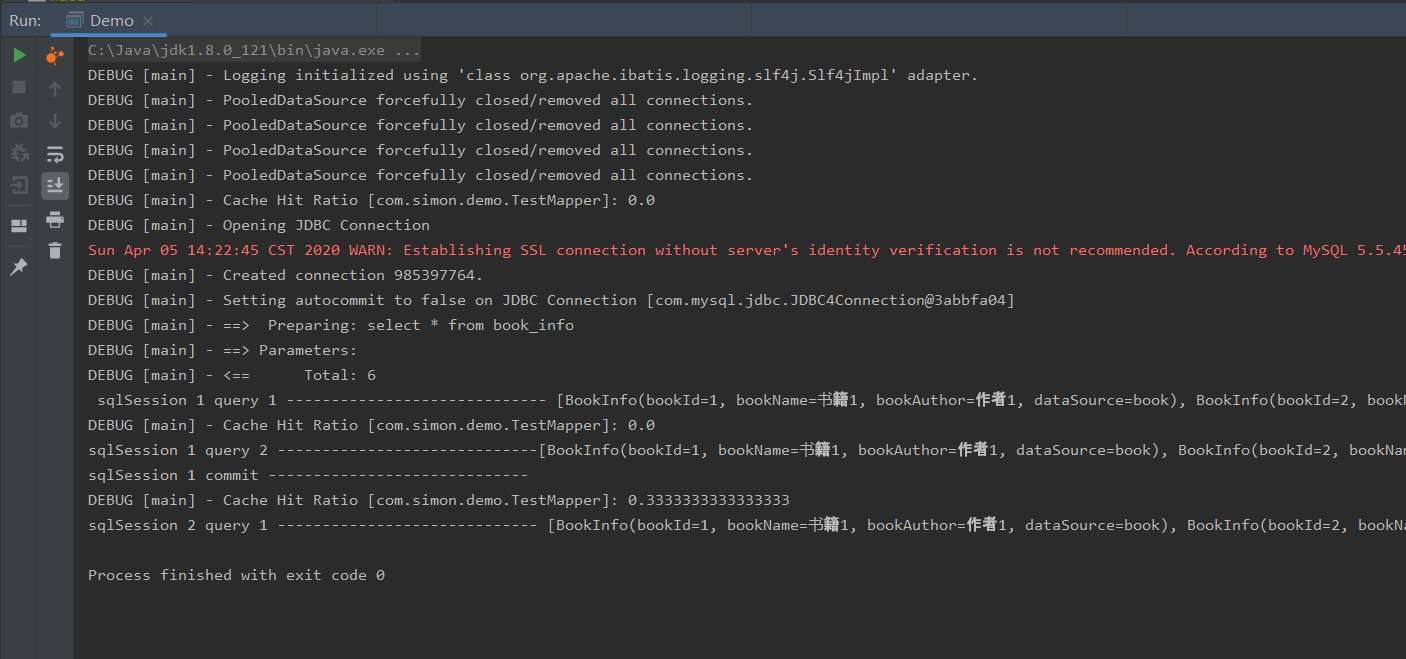

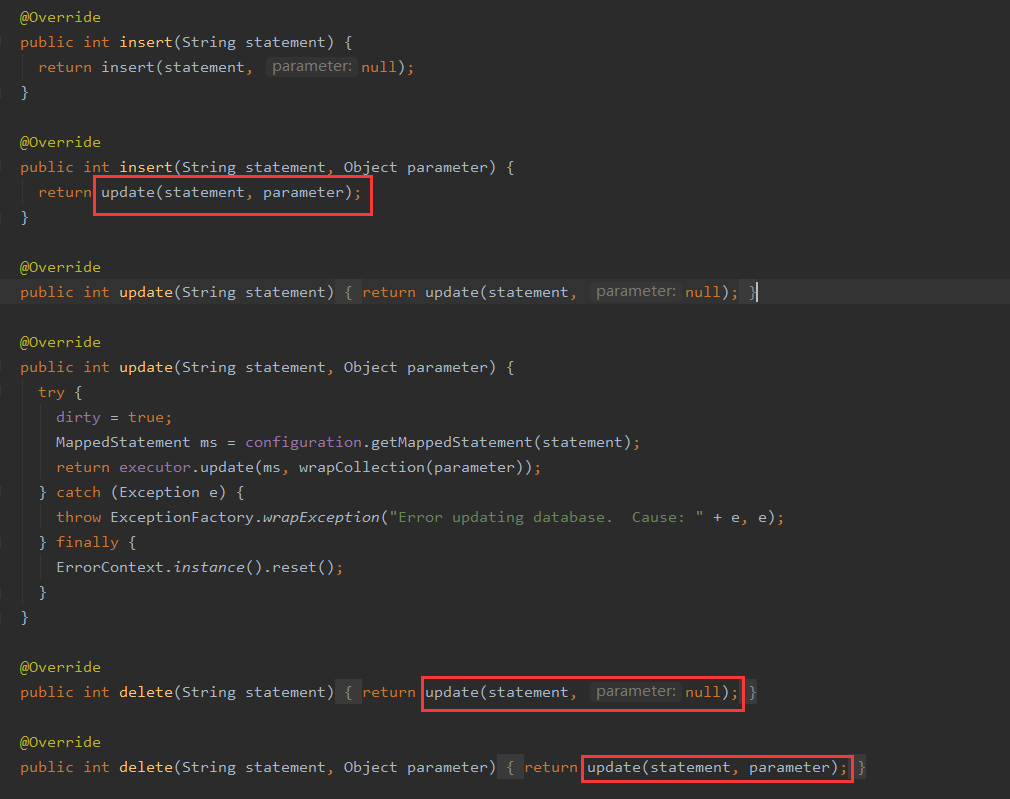
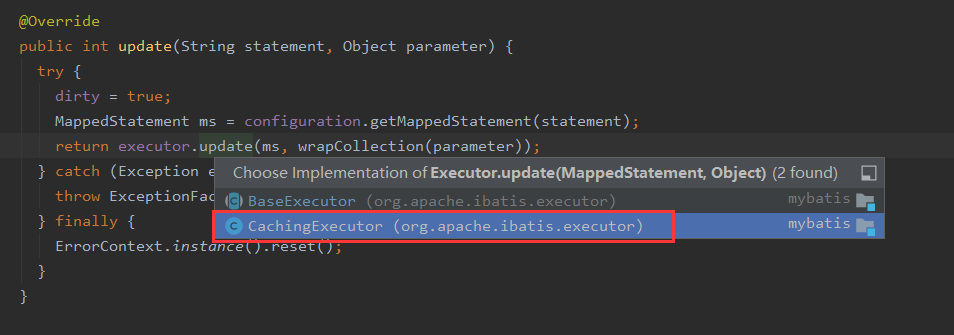


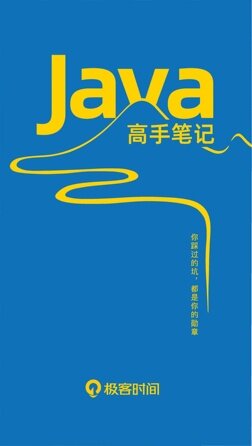
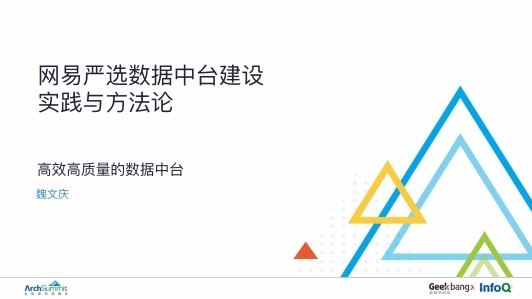









评论